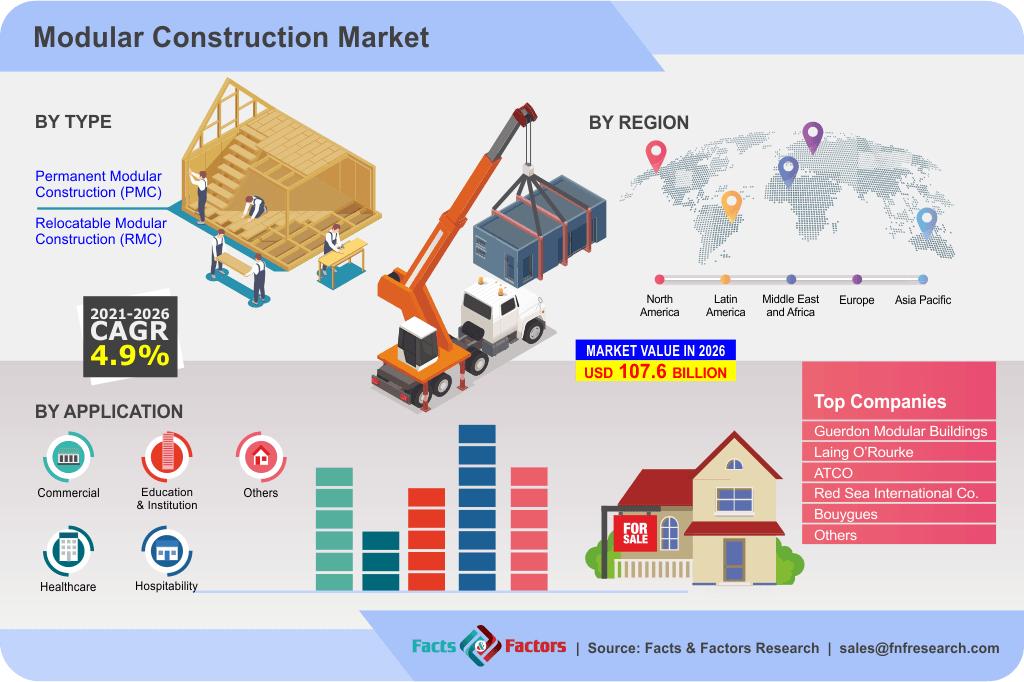Modular construction techniques are rapidly gaining popularity in Southeast Asia. It offers a faster, more efficient way to build in an area grappling with rising urbanization, labor shortages, and cost constraints. With a growing need for affordable housing and infrastructure, Modular Construction Southeast Asia is increasingly seen as a solution to meet these challenges. Here’s how modular construction is making a big impact on the region, with a focus on efficiency and cost savings. Let’s take a look!
Market Growth and Labor Challenges Driving Adoption
The modular construction market in Asia Pacific is expected to experience significant growth over the next decade. Projections show a compound annual growth rate (CAGR) of 6.8% between 2023 and 2030, with the market growing from USD 38.30 billion in 2023 to USD 60.74 billion by 2030. This boom is largely driven by rapid urbanization and a pressing need for faster, more cost-effective construction solutions.

Labor shortages and rising labor costs have also become critical issues in Southeast Asia. The construction sector faces challenges in finding skilled workers, which slows down traditional building methods. Modular Construction Southeast Asia addresses this issue by shifting much of the building process into controlled factory environments. In turns, this will reduce the reliance on on-site labor. This is particularly important in a region where the demand for housing and infrastructure is high but the labor supply is limited.
Government Support for Modular Construction Southeast Asia
Governments across Southeast Asia are actively supporting modular construction through infrastructure investments. For example, in Indonesia, large-scale healthcare facility upgrades have been funded by the Asian Development Bank, with $650 million allocated to such projects. These investments highlight the government’s focus on adopting modular solutions to meet urgent public infrastructure needs.
By backing Modular Construction Southeast Asia, governments not only aim to address the labor shortage problem but also to speed up construction projects. Their support is vital in helping countries achieve their development goals while keeping up with the pace of urbanization.
Key Benefits of Modular Construction Southeast Asia
One of the most significant advantages of Modular Construction Southeast Asia is its ability to shorten project timelines. Modular techniques reduce construction times by 20-50% compared to traditional methods. This is because prefabricated modules are manufactured off-site in factories, which allows for work to continue simultaneously at the construction site. Once the modules are ready, they are transported and assembled on-site, drastically reducing the time spent on-site.
Modular construction also offers significant cost savings, making it an attractive option for both governments and private developers. By using this method, project costs can be reduced by up to 20%. These savings are primarily due to reduced labor costs, fewer on-site delays, and the more efficient use of materials.
In traditional construction, unexpected delays—such as bad weather—can lead to higher costs. With modular construction, most of the building is done indoors, in a controlled environment, which minimizes such risks. Additionally, the off-site manufacturing process allows for better planning and less material waste, further contributing to cost reductions.
Sustainability: A Greener Way to Build
Sustainability is another major factor driving the adoption of Modular Construction Southeast Asia. The method uses fewer resources and produces less waste compared to traditional construction techniques. This is crucial in a region where environmental concerns are becoming more important, and where governments and developers are looking for greener building solutions.
Modular construction’s alignment with sustainability goals makes it a more attractive option as Southeast Asia continues to develop its urban infrastructure. By reducing waste and cutting down on material usage, modular methods help promote eco-friendly building practices.
Modular Construction Southeast Asia is revolutionizing the building industry in the region. With its potential for faster project completion, significant cost savings, and alignment with sustainability goals, it’s no wonder the market is expected to grow by 6.8% annually over the coming years. As governments and developers embrace this innovative technique, modular construction is set to play a crucial role in shaping the region’s future infrastructure.

